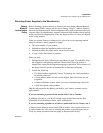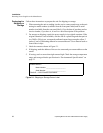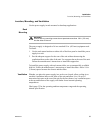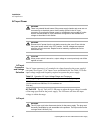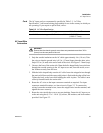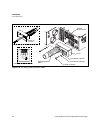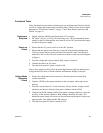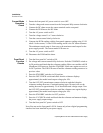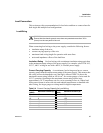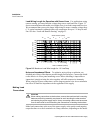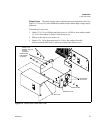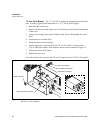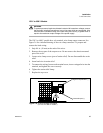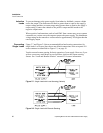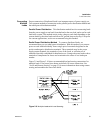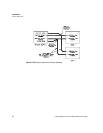
Installation
Load Connection
Release 2.1 45
Load Connection
This section provides recommendations for load wires and how to connect them for
both single and multiple load configurations.
Load Wiring
When connecting load wiring to the power supply, consider the following factors:
• insulation rating of the wire
• current carrying capacity of the wire
• maximum load wiring length for operation with sense lines
• noise and impedance effects of the load lines
Insulation Rating Use load wiring with a minimum insulation rating equivalent
to the maximum output voltage of the power supply. For example, select TEW-105,
105 °C, 600 V wiring for use with a 600 V, 4 A model power supply
Current Carrying Capacity As a minimum, load wiring must have a current
capacity greater than the output current rating of the power supply. This ensures that
the wiring will not be damaged even if the load is shorted. Table 2.4 shows the
maximum current rating, based on 450 A/cm
2
, for various gauges of wire rated for
105 °C operation. Operating at the maximum current rating results in an
approximately 30 °C temperature rise for a wire operating in free air. Where load
wiring must operate in areas with elevated ambient temperatures or bundled with
other wiring, use larger gauges or wiring rated for higher temperatures.
Table 2.4 Current Carrying Capacity for Load Wiring
WARNING
Ensure that the chassis ground screw does not penetrate more than 3/8 in.
(9 mm) into the rear panel of the unit.
Wire Size
(AWG)
Maximum Current (A)
Wire Size
(AWG)
Maximum Current (A)
20 2.5 6 61
18 4 4 97
16 6 2 155
14 10 1 192
12 16 1/0 247
10 21 2/0 303
836



